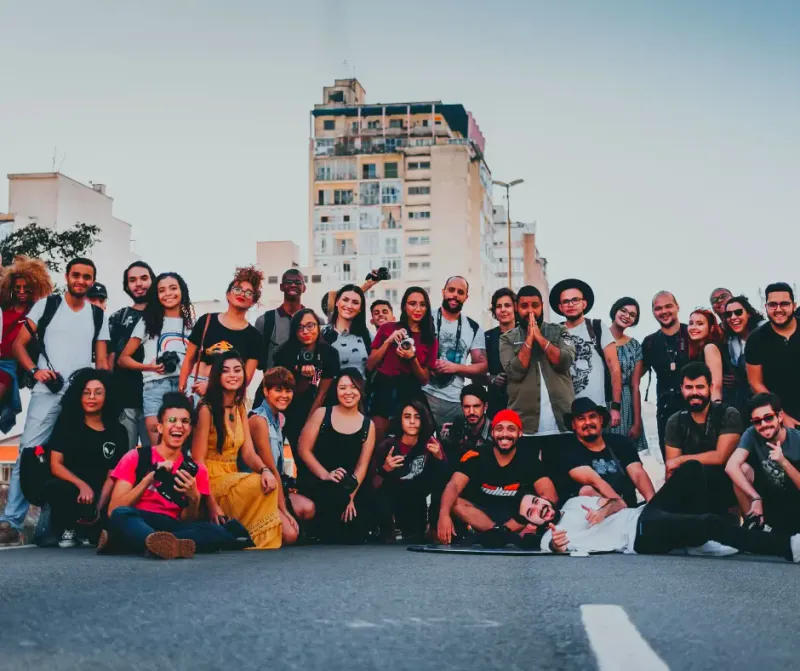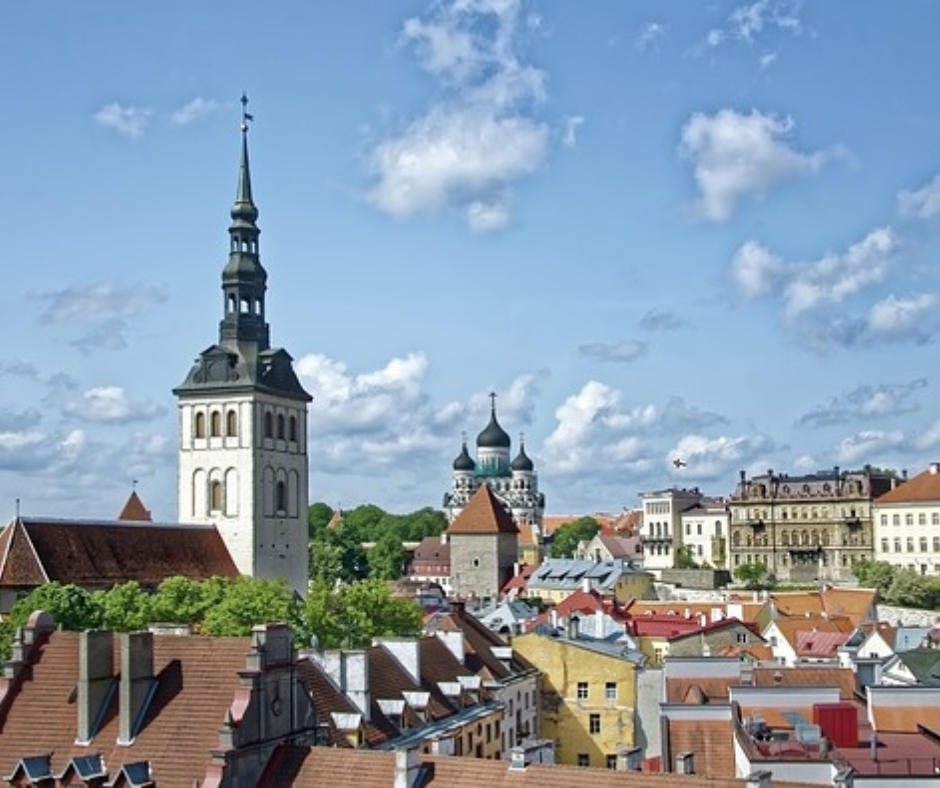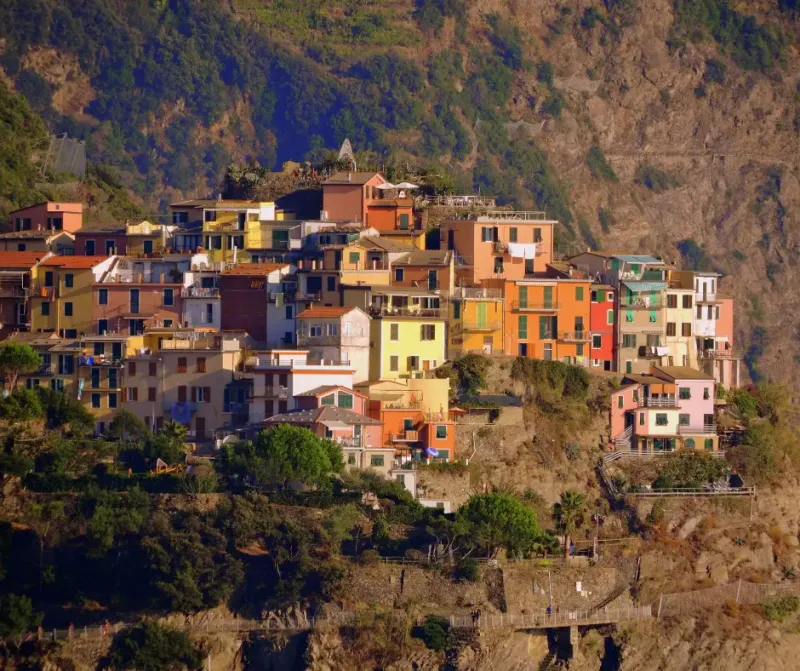Are you looking for a happy place to work from? You just found one: Denmark. The northern country is reported to be one of the happiest countries in the world. Though not immediately obvious on the map, Denmark includes more than 400 islands, of which 72 are populated. The peninsula of Jutland is the biggest Danish land mass and together with the main islands, it counts the biggest population.
Danes became widely known in the Viking era when the Danish kingdom was established. The Danish monarchy is the oldest monarchy in the world.
Today Danes are proud inventors of Google Maps and Bluetooth. Its sign and name are a combination of Germanic runes of King Harald Blauzahn.
🇩🇰 Entry requirements for Denmark
- Visa: Valid Schengen visa.
- Insurance: Travel health insurance that matches the Schengen requirements. Your insurance policy needs a minimum amount of 30,000 Euros of emergency cover.
🌱 Travel health insurance for Denmark
- Additional note: Covid-related entry regulations are lifted on February 1st, 2022. Please check your airline, train, or bus company for additional required documents.
🏡 How to find a place
- Airbnb: Looking for a rental apartment in a Danish city center will be expensive. The average rental price is up to 1,800 Euro per month for a 1-bedroom studio.
- lifeX: LifeX is a coliving platform available in many cities within northern Europe. Here you find apartments for coliving in central Copenhagen. The average price for the apartments is 1,800 Euro per month depending on size and location. LifeX is all about community and shared living. Although you have your own bedroom or apartment, there is no dedicated coworking space. However, you can work in your private rooms or in the common areas.
✈️ How to get to Denmark
- Plane: Denmark counts 4 international airports with the busiest being Copenhagen Airport. The airport is located on Amager, an island 8 kilometers south of Copenhagen and 24 kilometers west of Malmö (Sweden). The fastest route from the airport to Copenhagen is via regional train or metro, which takes less than 15 minutes and costs approximately 5 Euro. Billund Airport is located only 2 kilometers from the center of Billund and can be easily reached by bus. Aarhus Airport is the smallest international airport in Denmark and is located in Tirstrup, 36 kilometers northeast of Aarhus. There are currently regular flights to Gothenburg, Oslo, Prague, Gdansk, and Stockholm and seasonally to Germany, Spain, France, and Croatia.
- Train: Denmark is part of Eurail, and it is easy to travel from neighboring countries, such as Germany or Sweden but also from the Netherlands or Poland.
- Bus: Europe has an excellent bus network, and the most popular bus companies are Flixbus, Blablacar, and BerlinExpress.
- Ferry: When coming from Germany, Sweden, or Norway you can also travel to Denmark by ferry. Several tour operators run ferry and cruise services to Denmark from other major European destinations, including Scandlines, Color Line, Fjord Line, and Stena Line.
🚌 Public transport
- In general: Public transport in Denmark is easy, fast, and convenient. As a small country with hundreds of islands, there are plenty of interconnecting transport routes by land, sea, and air.
- Copenhagen: Public transport in Copenhagen is inexpensive and easy to use. You can pay per journey in cash at a machine in a metro or train station, or in person on a bus. Copenhagen is divided into zones and fares depend on how many zones you are traveling through.
- Copenhagen Card: The Copenhagen Card gives you unlimited public transport in the capital region of Denmark plus free entry to more than 80 museums and attractions. It is available for a 24, 48, 72, and 120-hour period, and costs between 60 and 142 Euro for adults.
- Cycling: Copenhagen is famed for its cleanliness and bicycle-friendly culture. You will quickly find out that Danes prefer cycling. So why not hop on a bike and blend in like a local?
🏘 Where to stay in Copenhagen
Copenhagen is a very walkable city and most sites are reachable by foot. Some of the most popular districts in Copenhagen are Vesterbro, Østerbro, Nørrebro, and Frederiksberg. Here, everything is accessible within biking distance giving you the best Scandinavian experience while enjoying your local neighborhood cycling.
🧑🏻💻 Where to work from
Coworking spaces
- Republikken: The first coworking space in Copenhagen, where you find everything from private offices, lounge areas, canteen, and kitchen as well as fast wifi and 24/7 access.
- SOHO: Choose between three locations of SOHO OFFICE in Copenhagen and you will get lightning-fast fiber internet, ergonomic chairs, and great food at their NOHO Restaurants and Cafés.
- La Oficina: Located in a historical building, which was once the Royal Class Lottery and within the vibrant district Frederiksberg, you will find another unconventional coworking space: La Oficina. Doors are open 24/7, and their kitchen serves delicious food and freshly roasted coffee.
Coffee shops
- Coffee Collective: The Coffee Collective is a micro roastery with 2 coffee shops and 1 coffee school. To reach the ambitious goal of making the best coffee in Copenhagen, they are cooperating with farmers to develop sustainable production and to improve the quality of the coffee.
- CUB Coffee Bar: Another micro-roaster in Copenhagen and worth visiting. The café is in the basement of an 18th-century building and comes with a cozy inviting interior design. You will find tasty coffee and strong wifi here.
🚊 How to travel around Denmark
- Train: It's easy to travel by train from Copenhagen to the rest of Denmark. A train from Copenhagen to Aarhus takes 3 hours, to Aalborg 4 hours, and to Odense 1.5 hours. DSB is the official Danish national rail operator. You find routes, schedules, and online bookings on the website. A highlight by train is by exploring the Öresund Bridge connecting Copenhagen and Malmö in Sweden. It's a 40-minute train ride with a stunning sea view.
- Bus: Travelling by bus is affordable and convenient. Bus operators connect major Danish cities as well as Copenhagen and many European destinations. Major bus companies are Flixbus and BerlinExpress
- Car: Driving a car in Denmark opens doors to nature adventures outside the urban areas. Nice routes are for example the Funen road trip, and Marguerite Route, or crossing the Öresund Bridge which connects Denmark with Sweden. Keep in mind that driving in Denmark means driving on the right side of the road, no mobile phone while driving, and buckling up is a must.
- Ferry: As you'd expect from a country made up of so many islands, boats and ferries provide an essential service. It's a refreshing way to travel too. Within Denmark, there are numerous ferries and passenger boats that will take you to the many smaller Danish islands.
🎖Must see in Denmark
- Copenhagen: Visit Nyhavn, the historic waterfront of Copenhagen with all its wooden ships and cafes, or enjoy bar hopping and clubbing around the famous, car-free shopping area around Strøget. Strøget is the longest car-free street in Europe. Don't forget to visit the Little Mermaid.
- Tivoli Garden: Copenhagen is home to the world's oldest theme park, the Tivoli Gardens which offers a rollercoaster and a carousel. The park is built in the romantic design of the 19th century and is popular with couples.
- Aarhus: The Latin Quarter in Aarhus comes with cozy cafés, and the historic village Den Gamle By is your opportunity to travel back in time.
- Gilleleje: Do you know there is a Danish Riviera? You might have thought there isn't such an area so far north, but Gilleleje is the place for this. Gilleleje is a picturesque fishing town on the North Sea at the top of Zealand's island. Stroll around the city, take part in the early morning fish auction, and visit the monument of Kierkegaard, the first existential philosopher.
💡Good to know
- Internet: Denmark has the sixth-fastest internet worldwide. Danes enjoy an average speed of 161.96 MBPS download, and 94.46 MBPS upload speed.
- Sim card: Choice in Denmark for prepaid sim cards is very limited to Lebara and Lyca Mobile. You can get Lebara and Lyca sim cards easily at the airport or at shops, for example at Seven Eleven.
- Cost of living: Rent prices for apartments can be anywhere between 1,500 and 2,500 Euro per month, depending on the city and the time of the year. In the winter months, many Danish cities are much more affordable than in the summer months. You can calculate a monthly budget of 3,000 to 4,000 Euro without coworking space.
- Currency: The Danish krone is the main currency, and 1 DKK converts to 0.13 Euro or 7.45 DKK to 1 Euro.
- Climate: Denmark has a distinctly coastal climate, with mild, damp winters and cool, pleasantly warm summers. Average seasonal temperatures vary from about 2 degrees in winter to about 16 degrees in summer. However, the weather in Denmark is greatly affected by the proximity of both the sea and the continent.
- Safety: Overall, Denmark is a very safe country to visit.
- Manners: There is no word for “please” in Danish. Children are taught to say, “Må jeg bede om…” when requesting something politely, which translates to “May I beg for…”.
🚧 What to avoid
- Jaywalking: Danes are patiently waiting for the green-traffic light before crossing a street.
- Don't drink and ride: Don’t drink alcohol while cycling. Keep in mind that besides the risks of accidents, riding a bike drunk is fined 200 Euro.
- Danes are not Vikings: Danes are surely proud of their fearless ancestors but hold back calling them Vikings.
🚴🏻♀️ How to stay healthy
Stay active
- Cycling: Denmark is a bicycle-friendly nation and cycling is the most popular form of transport. All over Denmark, you will find a wide and extensive network of great cycling routes and dedicated cycling lanes. There are several companies you can rent a bike from. The latest models even have a touch-screen tablet with built-in GPS.
- Urban outdoor: Financial investment is being allocated to outdoor green public spaces, such as exercise trails, natural playgrounds, and peri-urban forests. The green nooks and parks are a great way to go for a morning run, an afternoon walk, and a weekend hike.
- Hiking: Close to Aarhus, you find the Mols Bjerge national park. It is only 40 min. drive by car or a 2 hours bus ride to reach the trail heads of many different routes. Mols Bjerge is a great destination for hikers, and mountain bikers alike.
Health risks
- Water quality: You can drink tap water in Denmark. Actually, you should drink it. The quality is even higher than many bottled water you buy in stores.
- Air quality: The air quality in Denmark is good.
⚓️ Long stay
There is no digital nomad visa in Denmark at the moment.






